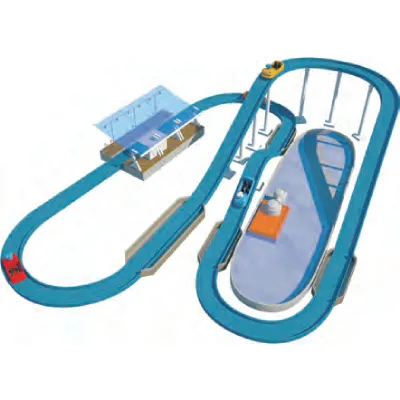- Albanian
- Arabic
- Belarusian
- Bengali
- Czech
- English
- French
- German
- Hebrew
- Hungarian
- Indonesian
- irish
- Italian
- Japanese
- kazakh
- Persian
- Russian
- Thai
- Uzbek
- Vietnamese
cost to buy a ferris wheel
The Cost to Buy a Ferris Wheel An Overview
Ferris wheels have become iconic symbols of amusement parks, fairs, and carnivals around the world. Their towering structures and panoramic views attract thrill-seekers and families alike, making them a staple of outdoor entertainment. However, if you've ever dreamt of owning your own Ferris wheel, you may be wondering about the costs associated with purchasing one. In this article, we'll explore the various factors influencing the price of a Ferris wheel, provide a rough estimate of the costs, and discuss the ongoing expenses involved in maintaining such a magnificent attraction.
Initial Costs
The initial cost of buying a Ferris wheel can vary tremendously based on several factors
1. Size and Design Ferris wheels come in a variety of sizes and designs. A small, portable Ferris wheel for a local fair might cost anywhere from $100,000 to $500,000, while a large, custom-built Ferris wheel in an urban setting could cost several million dollars. For example, the London Eye, one of the largest and most famous Ferris wheels in the world, had an estimated construction cost of around £75 million (approximately $100 million at the time).
2. New vs. Used Purchasing a new Ferris wheel is usually more expensive than buying a used one. However, newer wheels typically come with updated safety features and technology, which can be beneficial in the long run. Used Ferris wheels can be found at auctions or through amusement ride manufacturers, with prices that may range from $50,000 to $1 million, depending on the condition and age of the wheel.
3. Location and Installation The cost of land and installation should also be factored into the overall price. Setting up a Ferris wheel involves significant groundwork, including ensuring that the foundation is secure and that all safety protocols are followed. Depending on the location, permits, and zoning regulations, installation costs can add an additional $200,000 to $500,000 to the total expenditure.
4. Transportation If you are purchasing a portable Ferris wheel, transportation costs will also play a role in the overall price. Depending on the distance from the manufacturer to your location, transportation can set you back another $20,000 to $50,000.
Ongoing Expenses
cost to buy a ferris wheel

Buying a Ferris wheel is just the beginning; ongoing expenses must also be considered
1. Insurance Operating a Ferris wheel comes with liability risks, so it’s essential to invest in comprehensive insurance coverage. This cost can range from $5,000 to $20,000 annually, depending on factors such as the location and number of operating days.
2. Maintenance and Repairs Regular maintenance is critical for ensuring safety and functionality. Maintenance costs can vary widely but budgeting about 10% of the initial purchase price per year is a good rule of thumb. This includes inspections, repairs, and replacing parts as needed.
3. Staffing Hiring staff to operate the Ferris wheel and ensure safety is another recurring expense. Depending on the number of employees and local wage standards, expect to budget anywhere from $30,000 to $100,000 annually.
4. Operational Costs This includes utilities, such as electricity for operating the ride, as well as marketing costs to attract customers. These costs can add up to another $10,000 to $50,000 each year, depending on your scale of operations.
5. Licensing and Permitting Make sure to account for any licensing and permitting fees, which may vary by location. These can be a few hundred to several thousand dollars annually.
Conclusion
While the allure of owning a Ferris wheel can be enticing, it's important to consider the substantial financial investment required. From initial purchase prices ranging from tens of thousands to millions, to ongoing operational costs, owning a Ferris wheel is a venture that requires thorough planning and budgeting. If managed correctly, however, it can provide unique entertainment experiences and create lasting memories for people of all ages.
-
Double Ferris Wheel Sale | Premium Custom RidesJul.31,2025
-
Flume Ride-Hebei Zhipao|Water-Based Attraction, Safety Standards, High-Speed DescentJul.31,2025
-
Flume Ride: Thrilling Water-Based Adventure & Advanced Engineering - Hebei ZhipaoJul.31,2025
-
Flume Ride-Hebei Zhipao Amusement Equipment Manufacturing Co., Ltd.|Thrilling Water Attraction&Customizable DesignJul.30,2025
-
Flume Ride - Hebei Zhipao Amusement Equipment | Water Coaster, Thrilling DescentJul.30,2025
-
Flume Ride - Hebei Zhipao | Thrilling Water AttractionJul.30,2025
